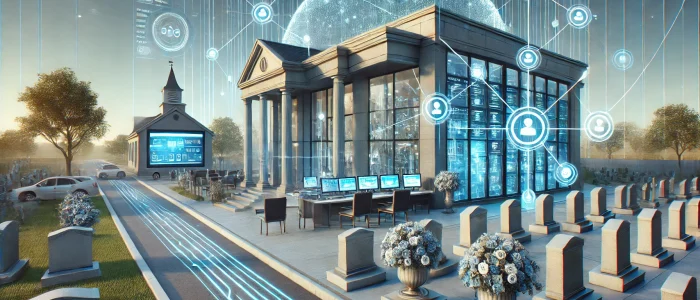A leading funeral home operator with over 200 privately owned locations across North America faced a major challenge: Their funeral home facilities had dated IT Infrastructure, some of which was outside their internal IT standards. This led to inefficiencies, delays, and inconsistent service delivery and security posture. Managing IT across so many locations was complex and costly, making it clear that a modern, standardized, scalable solution was needed.
Summary of NMC Business Value Provided:
NMC’s IT transformation delivered significant business value in a short timeframe by:
- Enhancing operational efficiency by implementing a unified, reliable IT infrastructure
- Improving security and reliability across locations through modernized networks and systems
- Ensuring seamless technology integration to support business growth and automation
- Providing 24×7 support to minimize disruptions and ensure smooth transitions
- Streamlining IT project management to keep the initiative on schedule and within budget
By leveraging a complete solutioning approach and leveraging its many experienced technical teams, NMC successfully planned and implemented site upgrades in a streamlined implementation process within aggressive business timelines.
The Initial Challenges
- Outdated Technology: Many locations were running on unsupported or old hardware, leading to frequent downtime due to hardware failures
- Lack of Standardization: Funeral homes with different IT setups, made it difficult and inefficient to manage and support the environment remotely
- Security Risks: Unsecured networks and outdated hardware increased the risk of data breaches and service disruptions
- Scalability Concerns: The absence of a centralized IT approach made it difficult to integrate new acquisitions seamlessly
- Business Environment:
-
- 200+ funeral home locations
-
- 3,000+ employees
-
- Two-year project timeline
The NMC Approach
- Comprehensive IT Assessment: Conducted in-depth site evaluations / site surveys to understand existing infrastructure and facilities
- Created an end-to-end Implementation Solution: This included acquiring hardware, centralized equipment storage and configuration, shipping and logistics, onsite installation and remote technical support all controlled by a central Project management team
- Pilot Testing for Accuracy: Implemented solutions at 10 initial pilot sites to prove and refine the rollout process before full deployment
- Standardized Implementation: Deployed consistent network, server, and security configurations across all locations
- Efficient IT Project Management: Centralized control over all aspects of project execution, reporting, and logistics to ensure smooth implementation
- 24×7 Support & Maintenance post upgrades: Provided round-the-clock monitoring and assistance to ensure minimal disruption during upgrades













